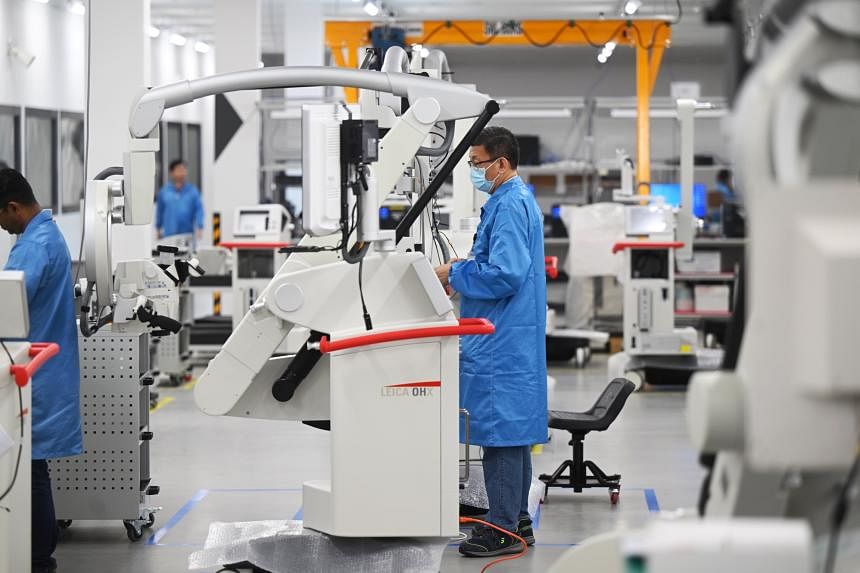SINGAPORE – After a stumble in February, factory activity in Singapore regained its balance in March, buoyed by the electronics sector which turned in its best performance since mid-2022.
The purchasing managers’ index (PMI), a barometer of the manufacturing sector, nudged upwards to 50.7 points in March, from 50.6 points a month earlier, data released by the Singapore Institute of Purchasing and Materials Management on April 2 showed.
Meanwhile, the PMI for electronics, a key sector of manufacturing, rose by 0.4 point to 50.8 points, from 50.4 points recorded in the month before. Readings above 50 points denote growth, whereas those below 50 indicate contraction.
The overall expansion in manufacturing – for a seventh month in a row – was underpinned by faster growth across most indexes, including new orders, new exports, output, input purchases, finished goods and order backlog.
In comparison, those that expanded more slowly included imports, input prices and future business, while supplier deliveries contracted for a 10th consecutive month, albeit by a smaller degree.
For the electronics segment, all indexes expanded at a quicker pace except for input prices, which posted a more subdued increase.
Notably, input purchases under the electronics PMI posted the sharpest increase as it rose by 0.7 point to 50.9 points, while both supplier deliveries and factory output swung from contraction to expansion.
Economists The Straits Times spoke with all agreed that the March PMI data bodes well for second-quarter growth prospects, after the shaky start to 2024.
Maybank Securities economist Brian Lee said: “On the whole, an improvement in the overall and the electronics PMIs points to a sustained recovery in manufacturing activity and exports over the coming months.”
He added that the faster expansion in electronics input purchases suggests that “manufacturers appear more confident about their business outlook”.
OCBC chief economist Selena Ling pointed to the rally in the shares of chipmakers – supported by artificial intelligence-related demand – as a factor that could sustain the recovery.
Ms Ling added that the domestic manufacturing sector should see the pace of growth hit its stride in the first half, paving the way for a modest full-year recovery in 2024.
Also reinforcing this anticipated modest improvement in the near-term outlook is the way Singapore’s PMI has moved in tandem with the broader region’s, particularly in China, as well as in Indonesia, Taiwan and Thailand, she noted.
DBS Bank economist Chua Han Teng said the electronics cluster’s performance “will be the key to the manufacturing sector’s recovery”.
He remains cautious, however, about the uncertainties that lie ahead and said factors such as “high interest rates in advanced economies, lingering growth-related risks in China, as well as geopolitical tensions” may still be a threat to orderly global supply chains.
Ms Ling shared similar concerns but was focused on the unevenness of the latest improvements in the PMI.
This may be a reflection of the ongoing uncertainties stemming from geopolitical tensions and the still-elevated interest rate environment, she noted.
Separately, Mr Lee felt that the latest PMI data suggests that there was easing in cost pressures, and this is backed up by the Drewry World Container Index that tracks freight prices. The index has fallen by about 26 per cent from its peak on 25 Jan.
“The Red Sea disruptions may have been a speed bump to the recovery, rather than a roadblock,” he said.


